Enabling ‘Developer Options’ on your Android device is a useful step for tech enthusiasts, app developers and those looking to unlock additional features and customization options.
Although these settings are hidden by default to prevent accidental misuse.
However, activating Developer Options is a simple process. In this guide, we’ll walk you through the steps to enable “Developer Options” on your Android device, allowing you to enter a whole new realm of advanced settings and features.
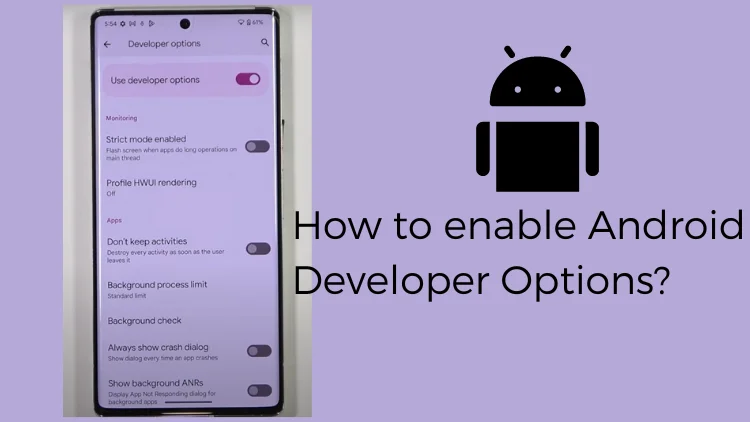


Here we have also given the guide to find the Firestick developer options.
Table of Contents
What Are Android Developer Options?
Developer Options, also referred to as Developer Mode, is a hidden menu within the Android Settings app that is specifically designed for Android developers. It offers a wide range of features and settings that are particularly useful for app testing and debugging purposes.
The Developer Options menu contains various options such as Wireless Debugging, Bug Report Shortcut, Show Surface Updates, Display Cutout, and Profile HWUI Rendering. While these options may seem unfamiliar to regular users, they hold significant value for developers and advanced users. As a result, they are hidden by default to prevent accidental interference.
It’s crucial to approach these settings with caution and avoid making impulsive changes. However, there are several Developer Options that can be highly beneficial to anyone. To begin exploring these options, let’s start by enabling Developer Mode.
How to activate Developer Mode on Android
Enabling Developer Mode on an Android device is a straightforward process. Follow the steps below to activate Developer Mode:
- Open the “Settings” app on your Android device. You can usually find it in the app drawer or by swiping down from the top of the screen and selecting the gear icon.



- Scroll down and find the “About phone” or “About device” option. It may be located at the bottom of the Settings menu or under a “System” category.

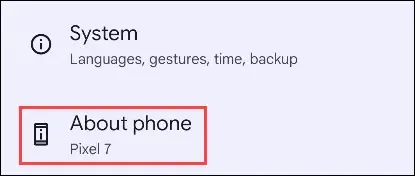

- Look for the “Build number” or “Build version” entry in the “About phone” section.

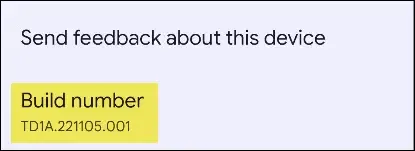

- Tap on the “Build number” entry repeatedly, typically around 7 times. You will see a message indicating that you are approaching developer status.

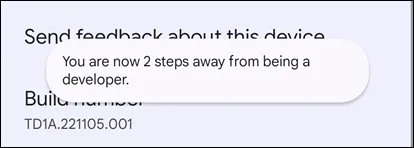

- After tapping several times, a notification will appear stating that you have enabled Developer Mode.
- Go back to the main Settings menu. You will now see a new option called “Developer options” or “Developer settings”

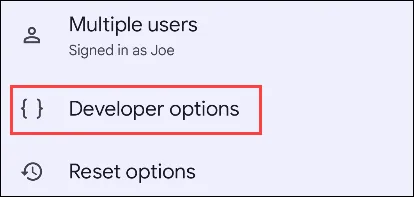

- Tap on “Developer options” to access and customize the various settings available for developers.
Note: Enabling Developer Mode may vary slightly depending on the Android device and version you are using. The general steps mentioned above should work for most Android devices. If you are unable to find the “Build number” or “Developer options” in your device’s settings, try performing a quick online search specifying your device model and Android version for more specific instructions.
Remember, while Developer Mode grants you additional control and debugging capabilities, it’s essential to use these options responsibly and avoid making changes that may negatively impact your device’s performance or stability.
What Is USB Debugging on Android?
USB Debugging is one of the most commonly used Developer Options on Android devices. But how does it work exactly? USB Debugging enables communication between your Android device and a computer. To enable this functionality, you need to have the Android Debug Bridge (ADB) installed on your computer.
When you enable USB Debugging, you gain the ability to execute commands from your computer that cannot be initiated directly on your phone. This includes tasks like booting into specific modes or performing actions that require computer intervention. USB Debugging becomes particularly important when undertaking activities such as rooting your phone, installing a custom ROM, or controlling your phone screen from your PC.
It’s crucial to consider the security implications of enabling USB Debugging, as it grants your computer access to your phone. To address this concern, you are required to manually grant permission from your phone, following the steps outlined below. This precaution ensures that you maintain control over the access granted to your computer.
How to Enable USB Debugging on Android
To enable USB Debugging on an Android device, follow these steps:
- Open the “Settings” app on your Android device. You can usually find it in the app drawer or by swiping down from the top of the screen and selecting the gear icon.



- On some devices, the “Developer Options” are simply on the main screen of the Settings app. Other devices put the Developer Options in the “System” section.

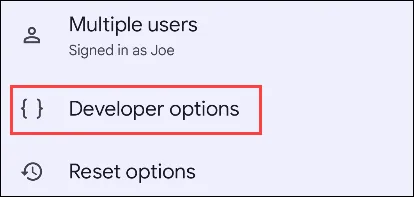

- Scroll down and look for “USB Debugging” under Debugging. Enable the toggle next to it.



- When you plug your Android device into a PC with a USB cable for the first time, it will prompt you to allow USB debugging. You can tap “Allow” and select “Always allow from this computer” to never have to do it again.



- To remove computers that you’ve allowed access to your device through USB debugging, go to the Developer Options menu and select “Revoke USB Debugging Authorizations”

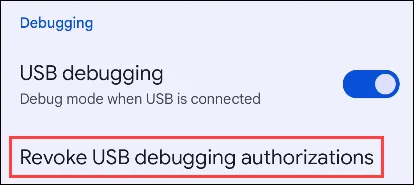

That’s all there is to enable USB Debugging! You’re ready to use it. You can now use adb commands or other tools that require USB Debugging access.
How to Deactivate Developer Options
You can disable the Developer Options settings just as easily as enabling it. This will revert all the changes you’ve made and hide the Developer Options once again. Simply go to “Developer Options” and turn off the switch at the top of the screen.
The device will need to restart to apply the change. You can always turn the Developer Options back on by following the steps at the top of this page again.
How Do I Unlock Developer Options on Android 13?
Now, we need to navigate back to the main settings menu and access the system settings. Towards the bottom of the screen, you will find the developer options. Let’s go ahead and select it.
FAQ
What is the benefit of developer option in Android?
The Settings app on Android includes a screen called Developer options where you can configure system behaviors that help you profile and debug your app performance.
Is it OK to turn off developer options?
Once enabled, you can access its various features to enhance your devices’ performance such as USD debugging, boosting the speed of video games, etc. While it may not seem like a threat to your device, software experts advise that developer mode should be turned off after use for security reasons.
Is it Safe to Enable Developer Mode in Android?
No, there is no (technical) security problem with developer settings enabled. The reason why they are usually disabled is that they aren’t important for regular users and some of the options can be dangerous, if used incorrectly.
How do I turn developer mode on?
Using Developer options. First, navigate to and open Settings. Tap About phone, and then tap Software information. To enable Developer mode, rapidly tap the Build number seven times in a row.
Do you need to turn on developer mode?
By default, Developer options are concealed, requiring you to enable them in order to access the available settings. The specific procedure may vary depending on the version of Android you have installed, and certain device manufacturers, such as Samsung, may relocate certain menus within the settings interface.
Why use developer mode?
Introduced in iOS 16 and watchOS 9, Developer Mode serves as a protective measure against unintentionally installing potentially harmful software on devices. It also minimizes the exposure of attack vectors associated with developer-only functionality.
Conclusion
In conclusion, Developer Options on Android devices provide a hidden treasure trove of features and settings that empower developers and power users to take control of their devices. From app testing and debugging to customizing the Android experience, Developer Options offer a range of functionalities that go beyond what is available in the standard settings menu.
Related:
